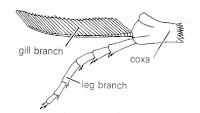A
Asyncritus
Guest
Pyrrharctia isabella
I was astonished to hear of the caterpillar of this moth on Frozen Planet whose commentator is that famous pro-evolution person, David Attenborough.
If you didn't, then you missed a treat if you hate evolution as much as I do.
Here's the score.
It lives in the arctic.
The caterpillar, after it has hatched out from its egg, stuffs itself with as much food as it can in the short arctic summer.
However, it simply cannot, in the available summer time, accumulate enough reserve energy to pupate. So what happens?
It freezes in the winter months - and that is absolutely literal in every sense of the word.
The heart stops and freezes, the gut freezes, the blood freezes - all solid as a rock.
Then, in spring, it 'comes back to life' (Attenborough's words), and repeats the process - for a total of FOURTEEN years.
In the fourteenth year, it has accumulated enough energy, pupates, and emerges as the adult moth which breeds and then dies.
Now ye evolutionists, account for this incredible phenomenon. How did it arise by small steps?
How did it learn to survive freezing solid? How many mutations and how much natural selection had to take place, to find this amazing physiology? And where did it come from?
Every other animal on the planet, if it freezes solid, dies.
In hibernating animals, everything slows down, nearly to a standstill - but they do not freeze solid. The hearts don't stop. The blood does not solidify. Their guts don't freeze solid.
So unless this was a special creation, and thereby entirely falsifies the theory of evolution by natural selection, then how did it arise?
I was astonished to hear of the caterpillar of this moth on Frozen Planet whose commentator is that famous pro-evolution person, David Attenborough.
If you didn't, then you missed a treat if you hate evolution as much as I do.
Here's the score.
It lives in the arctic.
The caterpillar, after it has hatched out from its egg, stuffs itself with as much food as it can in the short arctic summer.
However, it simply cannot, in the available summer time, accumulate enough reserve energy to pupate. So what happens?
It freezes in the winter months - and that is absolutely literal in every sense of the word.
The heart stops and freezes, the gut freezes, the blood freezes - all solid as a rock.
Then, in spring, it 'comes back to life' (Attenborough's words), and repeats the process - for a total of FOURTEEN years.
In the fourteenth year, it has accumulated enough energy, pupates, and emerges as the adult moth which breeds and then dies.
Now ye evolutionists, account for this incredible phenomenon. How did it arise by small steps?
How did it learn to survive freezing solid? How many mutations and how much natural selection had to take place, to find this amazing physiology? And where did it come from?
Every other animal on the planet, if it freezes solid, dies.
In hibernating animals, everything slows down, nearly to a standstill - but they do not freeze solid. The hearts don't stop. The blood does not solidify. Their guts don't freeze solid.
So unless this was a special creation, and thereby entirely falsifies the theory of evolution by natural selection, then how did it arise?
Last edited by a moderator:





